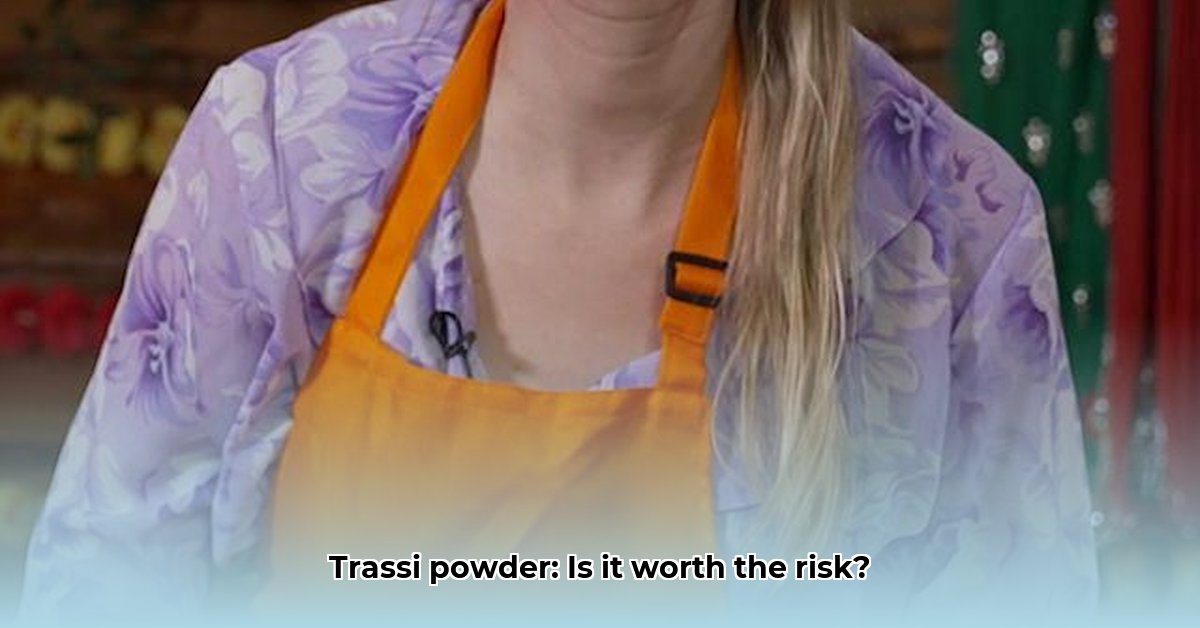
Trassi Poeder: Unlocking the Umami Secret
Jy ken dalk die sterk reuk van Trassi-poeier – daardie heerlike, umami-ryke pasta gemaak van gefermenteerde garnale. It adds a special flavour to many South African dishes, right? But there’s more to Trassi than just its delicious aroma. This article explores everything – the good and the less good – about this spice. We'll examine its nutritional profile, potential allergy risks, and the market dynamics. We'll also provide tips on how to use Trassi safely and manage its sodium content in your recipes. Whether you're an experienced cook or just curious about Trassi, this guide will help you learn more and make smart choices with this versatile ingredient.
Nutritional Profile: A Protein Powerhouse with a Catch
Trassi Poeder is a good source of protein – a concentrated flavour and protein boost in your cooking. Think of it as a tiny, mighty shrimpy superfood! However, the sodium content is quite high. This means you need to use it sparingly to avoid overdoing the salt. For those watching their sodium intake, it requires careful and moderate use as part of a balanced diet. We're talking a serious amount of salt here, so keep that in mind when adding it to your dishes. Have you considered the sodium content in your Trassi recipes? Many brands exceed recommended daily sodium intakes in a single serving.
Allergen Concerns: A Minefield of Potential Risks
Here's where things get tricky. Making Trassi Poeder carries a risk of cross-contamination with other allergens during production and packaging. Common culprits include peanuts, soy, and gluten. The problem is compounded by a lack of consistent standards across brands. Checking labels is crucial. It's not just about avoiding allergic reactions; it's about food safety and responsible manufacturing. "The absence of standardized labeling is a major concern," says Dr. Sarah Miller, Food Scientist at Stellenbosch University. "Consumers need clear, consistent information to make informed choices."
The Trassi Poeder Market: Untapped Potential
Demand for Trassi Poeder is growing, but obtaining reliable market data is challenging. This makes it difficult to understand consumer usage and potential market growth. More research is needed to understand the ingredient's full potential and improve its marketing in South Africa. What are the potential growth areas for this increasingly popular ingredient? Further market research could unlock opportunities for both local producers and consumers.
Actionable Steps: Producers, Consumers, and Regulators
How can we improve the situation? Here’s what we suggest:
For Producers:
- Prioritise Allergen Control: Implement strong measures to prevent cross-contamination, including thorough cleaning, separate processing lines, and rigorous quality control. Invest in clear labelling highlighting potential allergens.
- Sodium Reduction Research: Invest in research to reduce sodium content without affecting flavour. This could involve new processing techniques or flavour enhancers.
- Expand Market Reach: Explore new ways to market Trassi Poeder to a wider audience and introduce innovative recipes.
For Consumers:
- Check Labels Carefully: Examine labels for allergens and sodium content. Contact manufacturers with questions or concerns.
- Mindful Sodium Intake: Use Trassi Poeder carefully; it's high in sodium. Balance its use with other ingredients. If you have concerns about sodium, consult a healthcare professional.
For Regulators:
- Strengthen Food Safety Regulations: Review and strengthen regulations surrounding allergen controls and labelling to ensure they are up-to-date and effective.
- Enhance Sodium Labelling: Implement stricter guidelines for clearer sodium content disclosure.
Weighing the Risks and Rewards: A Summary
Here's a summary of key risks and mitigation strategies:
| Risk Factor | Likelihood | Impact | Mitigation Strategies |
|---|---|---|---|
| Allergen Cross-Contamination | Moderately High | Very Significant | Strict production protocols, improved traceability, detailed labelling |
| High Sodium Content | High | Moderate to High | Sodium reduction research, clear sodium content declaration, consumer education |
| Market Data Scarcity | High | Moderate | Increased market research, better data collection and sharing amongst stakeholders |
Trassi Poeder offers a unique flavour, but responsible production and informed consumers are crucial for safe and sustainable use. Further research into nutritional content and allergenic potential is needed.
How to Reduce Sodium in Homemade Trassi Powder
Understanding Trassi Powder's Sodium Content
Trassi powder's intense flavour often comes with high sodium content. The amount varies widely between brands, making sodium intake management difficult. Homemade Trassi powder offers a solution, allowing you to control the ingredients and, therefore, the saltiness.
How to Reduce Sodium in Homemade Trassi Powder: A Step-by-Step Guide
Making your own Trassi powder gives you complete control over the sodium content. Here’s how:
Source Low-Sodium Ingredients: Use shrimp or fish naturally lower in sodium. Fresh, high-quality ingredients improve flavour and reduce added salt needs. Thoroughly rinsing the seafood can also help.
Controlled Fermentation: The fermentation process itself doesn't significantly affect sodium content. The amount of salt added during fermentation determines the final sodium level. Experiment with reducing salt gradually. Remember that sufficient salt acts as a preservative.
Careful Drying and Grinding: Dry the paste carefully to prevent bacterial growth (a food dehydrator is ideal). Grind the dried paste finely for a uniform powder.
Blending for Sodium Reduction: Blend the powder with other flavourful, low-sodium ingredients such as garlic powder, ginger, onion powder, or chilli powder.
Taste Testing and Adjustment: Gradually add your homemade trassi powder to a recipe, tasting as you go to achieve the desired flavour while being mindful of the sodium content of other included ingredients.
Nutritional Profile and Allergen Concerns
The nutritional profile of trassi powder varies greatly. While a protein source, its high sodium content raises health concerns. Always check labels for allergens as cross-contamination is a risk. The lack of standardized labelling highlights the need for greater transparency.
Allergen & Sodium Risk Mitigation Strategies
| Risk Factor | Mitigation Strategy |
|---|---|
| High Sodium | Use low-sodium ingredients, blend with flavourful, low-sodium alternatives. |
| Allergen Cross-Contamination | Source ingredients from reputable suppliers with robust allergen control procedures. |
| Lack of Standardization | Advocate for clearer labeling regulations and standardized production practices. |